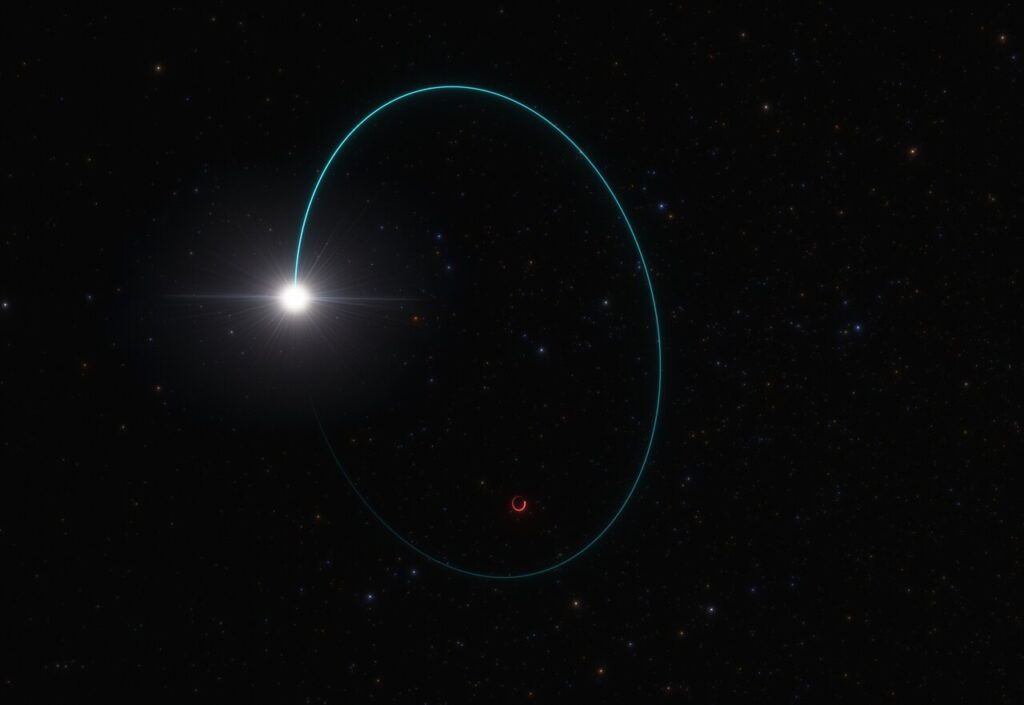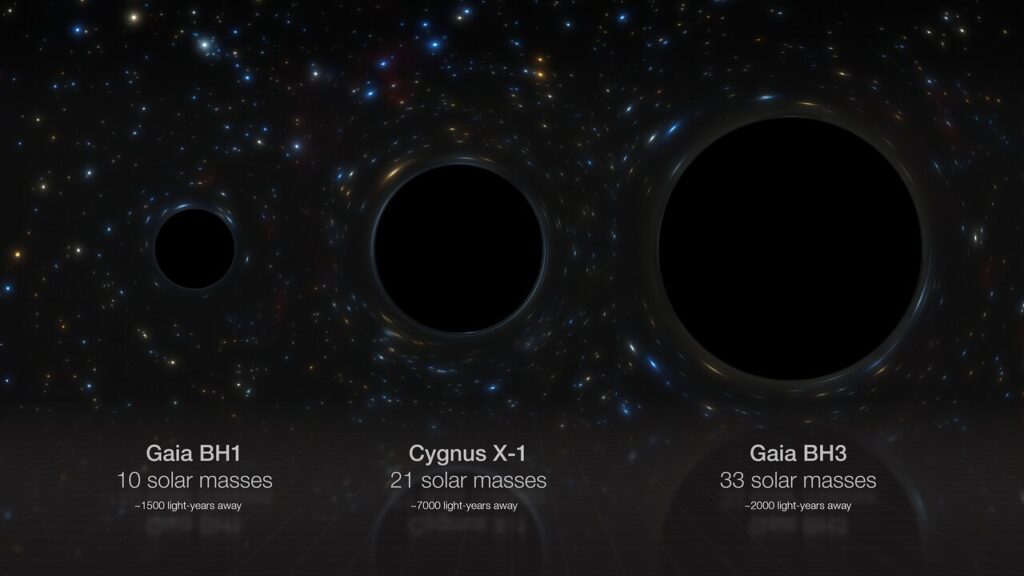Astronomers using data from European Space Agency’s Gaia mission have found the most massive stellar black hole in our own galaxy. This black hole was identified because it imposed an unstable and bizarre movement of its companion star orbiting it. The researchers verified its mass and the results were impressive: this is the biggest stellar black hole ever detected with a mass of 33 times that of the Sun!

The black holes are region in space-time with such a high gravitational potential that even the light cannot escape. The gravitational field of a black hole is so strong that the escape velocity needed is greater than the speed of light.
Black holes are divided, based on their mass, into supermassive black holes (SMBHs) and stellar black holes. The SMBHs have masses more than 1 million Suns together. The supermassive black hole at the center of the Milky Way galaxy is called Sagittarius A. It has a mass equal to about 4 million Suns and would fit inside a very large ball that could hold a few million Earths.
On the other hand, stellar black holes have masses up to 30-40 times more than the mass of the Sun. Stellar black holes are made when the center of a very big star falls in upon itself, or collapses. Dubbed Gaia BH3 or BH3 for short, this black hole was found while the team were reviewing Gaia observations in preparation for an upcoming data release.
To confirm their discovery, the Gaia collaboration used data from ground-based observatories, including from the Ultraviolet and Visual Echelle Spectrograph (UVES) instrument on ESO’s VLT, located in Chile’s Atacama Desert. These observations revealed key properties of the companion star, which, together with Gaia data, allowed astronomers to precisely measure the mass of BH3.
Remarkably, this black hole is also extremely close to us — at a mere 2000 light-years away in the constellation Aquila, it is the second-closest known black hole to Earth.

The results of this research were published in the Astronomy & Astrophysics Journal with the title:”Discovery of a dormant 33 solar-mass black hole in pre-release Gaia astrometry” with lead author P. Panuzzo.
DOI: 10.1051/0004-6361/202449763
